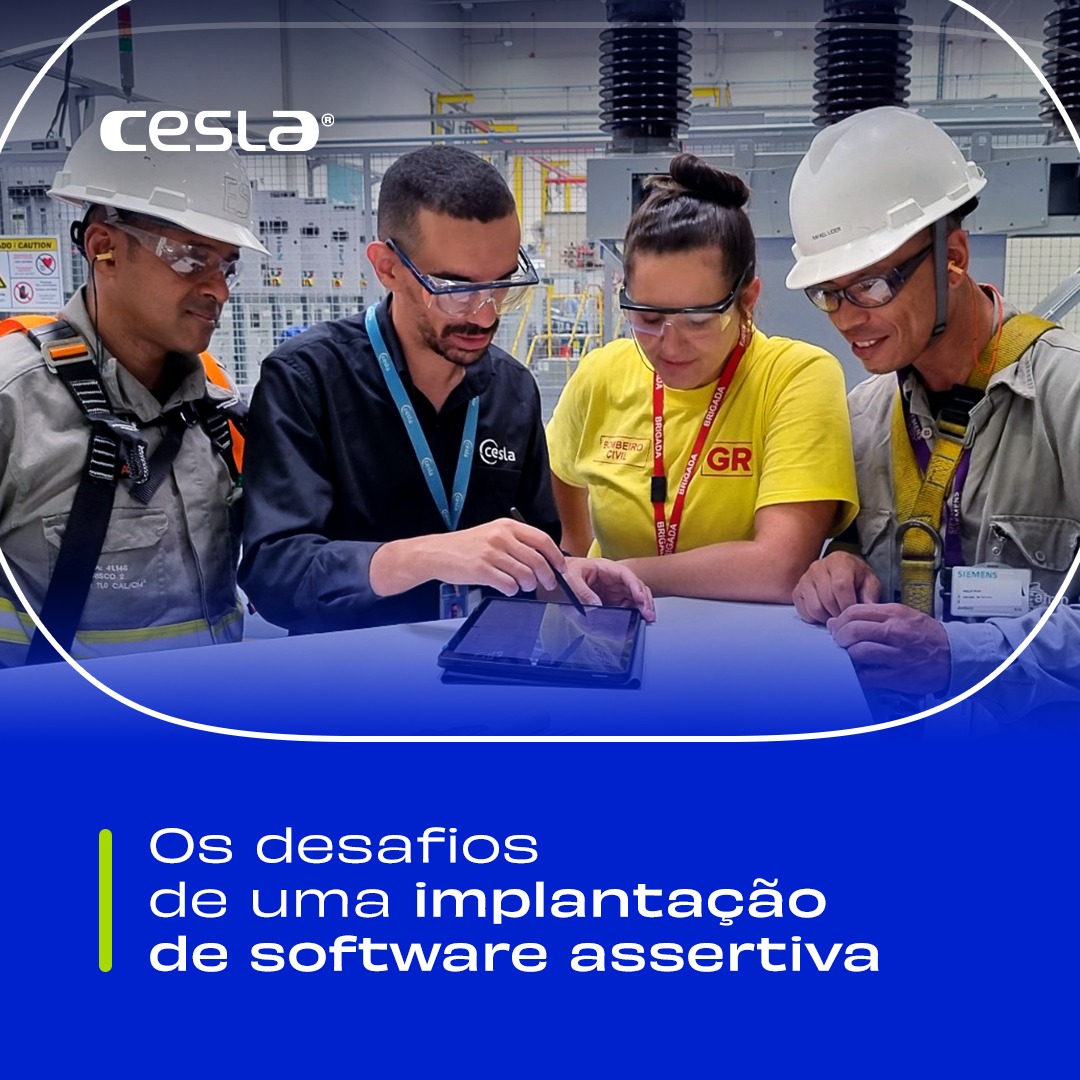by Douglas Santos - Rollout Team and Cleber Candido
CEO Cesla
Contract Closed! Usually we receive this news with great joy here, after all it means that our client saw value in our solutions and decided to invest time and money to implement it. And usually after the contract is closed, we almost immediately get the standard question: How long will we have the solution up and running?
Performing the implementation of a service like this at the client is a milestone for them, mainly because most of them come from decades of management entirely on paper with huge reworks and want to get rid of this as soon as possible. Deploying software at the client is not an easy task: there are several processes and hands that together constitute the success of an assertive implementation. Knowing how to listen and understand are fundamental for the success of an implementation built together.
Knowing the client, gathering the necessary information for modeling according to his reality and needs, strengthening the relationship with the team involved, and the necessary information to actually use what was hired.
That's when Cesla's Implementation team comes into play, a team of experts responsible for guiding the customer to get the most out of the acquired solutions. Answering the question of how soon we will have the solution running is quite difficult, but aiming to guide the customer from the very first moment, we developed a logical sequence of implementation, which we present below:
1st Step: Kick-off meeting
- In this meeting Cesla's commercial team presents to the external customer and to the internal customer what was sold as a solution, including modules, interfaces between systems, self storage, dual factor, among others.
- We define the product owners from both sides and present the Cesla teams involved (Implementation, Products, and Sustainability).
- We have created a whatsapp group just as the steering committee members of the project.
2nd Step: "As Is" Presentation
- This is the most important moment for both teams: alignment of expectations between the sold and the bought. Here we present a complete operational flow of the contracted module and at this moment we clarify the client's doubts so that he can see how the platform will work and if he needs to revisit his internal procedures and rewrite them, he will already be aware of them. This moment is crucial for the external customer to understand what was hired, demystifying the difference between a SaaS (Software with Service) and a Software House (Software owned by the customer).
3rd Step: Present a work schedule
- In this step we present a macro work schedule with all the project phases per module.
- The client follows through a detailed timeline all the phases of implementation and, in parallel, we present a macro and weekly status report on the progress of the solution implementation.
4th Step: Validate the application in the homologation environment
- After modeling, the client validates the complete flow with all its modeling and embodiments already done. The client is in a validation environment, but already has the feeling of how its interface and operating modes will be.
- After receiving the "agreement" for the model, we begin the training stages, where the so-called "Guardians" will be trained. The guardians will be the users with the most complete access profile and with the highest level of training from the client, and they will be in charge of supporting their local users regarding usability, and only the guardians can call the Cesla team in case of an effective problem with the platform.
In this phase, being present is our main goal: usually our team travels to the various units of our clients, to train them directly at their workplace. We travel to various places inside and outside the country, many hours of travel are added up by this team, whether by plane or car, we go through several cities and hotels. Armed with our PPE (Personal Protective Equipment) and tools, we make friends and get to know every detail of the operation. Even when we do remote deployments, we adapt and carry out the entire training process in advance, with content tailored to each team.
5th Step: Validate the application in the production environment
- After finishing the previous step, the development team prepares the production environment and connects the APIs (Interfaces with other software) if any.
- Once again the client is invited to make a complete flow, now in his official environment
6th Step: "Go live" with the tool
- After the application is validated in the production environment, the customer will send the "go live" acceptance, and at this point a meeting is scheduled that delivers the customer to the support team (Helpdesk), finalizing the participation of the implementation team.
Thus, we try to deliver the best possible experience between the kick-off and the go live, and ease the expectations for the beginning of the platform's use.










